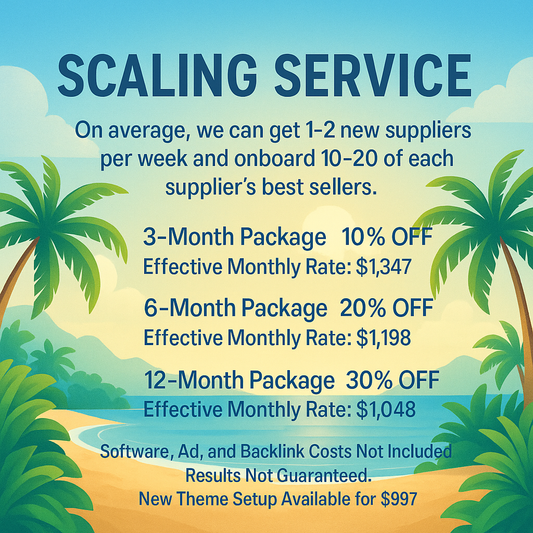
Email Marketing for eCommerce
The Ultimate Guide To Email Marketing for eCommerce
Email marketing is one of the best ways to reach your target market. With other platforms like Facebook, reaching potential customers is becoming more expensive, but with email, you have a way to get directly into their email inbox.
Email marketing is not only the least expensive way to reach people directly with your marketing messages, but it's also one of the highest converting marketing mediums that exist. People check their email all day long, so there’s a great chance they’ll see your email. Sending emails on a consistent basis gives those potential customers a reason to go back to your site to make a purchase.
With email marketing, you have the chance to provide value to your customers after purchase in more ways than just providing a tracking number. You can send them educational information about the product they purchased. You can introduce them to your company and mission. Using email as a medium for conveying your marketing messages is a great way to build a fanbase.
How To Do Email Marketing for High-Ticket Drop Shipping
If you're looking for a comprehensive overview of how to do email marketing for high-ticket drop shipping, watch my entire hour-long interview with Earnest Epps and be ready to take notes.
How Email Marketing Works
It starts with a giveaway or offers in exchange for an email address. Then, it’s a series of emails you send them to get them to take some sort of actionExamples of email marketing campaigns
- Lead generation campaign
- Abandoned cart campaign
- Purchase campaign
- Post-purchase campaign
We use Klaviyo for our high ticket drop shipping stores. Klaviyo is an email marketing app for Shopify. If you aren't using Klaviyo, but you are using Shopify, we highly recommend getting set up as it is able to pull data from your Shopify store like if the email lead has placed an order or not and much more.
Klaviyo works with "flows." These are simply a series of emails set to go out to an email address when something happens, like a sign-up or an order is placed.
For our membership site and affiliate marketing businesses, we use ConvertKit. The concepts are essentially the same but the technical setup process is a little different for each one. Let's break each campaign example down so you know how to put them together.
The Promotional Campaign
- Purpose: to get people to take action or buy something
- Starts with an offer or giveaway in exchange for email signup
- You send a series of emails, usually once a day for a few days that starts with an introduction, then asks them to take an action like follow you on social media.
- The next email will give them a limited time coupon or giveaway (with an exact expiration date/time).
- Follow up with some examples for products that are best sellers.
- Give them the chance to win something big in exchange for sharing your store with their social media friends.
- Keep sending product examples and giveaways or coupons until they convert. Once they convert, they are taken out of this email flow and placed into the new customer email flow.
The Educational Campaign
- A simple email course sent once a day for one week.
- Teaches a topic in an organized way.
- Throughout the lesson, you can include a call to action to upgrade or make a purchasing decision for those that want to buy your product.
- In the end, you can do multiple closing emails.
- You can take the people that don't convert and move them on to a different campaign focused on re-introducing them to your brand and getting them to take a simple action that doesn't require a purchase.
- The process goes on and on.
The Abandoned Cart Campaign
- Last but not least, this email flow gets almost-customers coming back to finish their order.
- The best way to get them to make a purchasing decision is to offer expiring coupon codes. (must have a definite date/time of expiration, the sooner the better).
- Let them know that the stock is running low and they are selling fast.
- If there is any way you can think of to build scarcity and value for the offering, get creative and do it.
The Post-purchase Campaign
- This flow helps customers understand delivery, product assembly/setup, warranty, return policy, etc.
- You can also send your customer related products and services to your product offering that they may be interested in. To find such offers, get creative. Look for affiliate programs in your niche and complementary niches.
If you found this article helpful, please consider sharing it on social media, links are below in the comments section. If you have anything to add or have any questions, please leave a comment below and I'll personally reply to you.


















